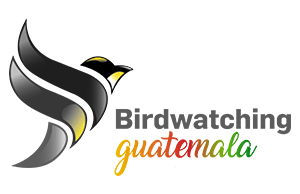Photo gallery for the Yellow-eyed Junco
Yellow-eyed Junco Identification Guide
Overview
The Yellow-eyed Junco (Junco phaeonotus) is a visually striking, ground-foraging sparrow found in the highland forests of Mexico, Guatemala, and the southwestern United States. Best known for its vibrant yellow to yellow-orange eyes—a feature that sets it apart from other junco species—this bird thrives in montane pine and pine-oak woodlands at elevations ranging from 1,000 to 3,000 meters. This guide explores the Yellow-eyed Junco’s appearance, range, behavior, and breeding patterns, providing birders and enthusiasts with essential identification insights.
Physical Description
- Size: 14–16 cm in length; wingspan 21–25 cm; weight 16–23 grams
- Plumage: Slate-gray head and upperparts, white belly, reddish-brown back
- Tail: White outer tail feathers, prominent in flight
- Eyes: Large, round, and bright yellow or orange-yellow
- Bill: Bicolored — dark upper mandible, yellowish lower mandible
Regional differences exist, with individuals in southern Mexico and Guatemala showing darker heads and less white in the tail.
Distribution and Habitat
The Yellow-eyed Junco primarily inhabits:
- Mexico – widespread throughout the central and southern highlands
- Guatemala – found in pine-oak forests at high elevations
- United States – limited to high-elevation “Sky Islands” of southern Arizona and New Mexico
Preferred habitats include open montane woodlands, especially pine and pine-oak forests, often near forest edges or clearings.
Behavior and Ecology
- Activity: Diurnal; most active during daylight hours
- Foraging: Ground feeders; forage among leaf litter for seeds, berries, and insects
- Social Behavior: Outside breeding season, form loose flocks
- Communication: Use vocalizations and tail-flashing displays to interact
Breeding and Nesting
- Breeding Season: Typically March to June
- Nesting Sites: Females build cup-shaped nests near the ground, often hidden in vegetation
- Eggs: 3–5 pale gray or bluish-white eggs per clutch
- Parental Roles: Female incubates; both parents feed the chicks
- Fledging: Chicks leave the nest around two weeks after hatching
Conservation Status
- IUCN Status: Not currently threatened
- Population Trends: Stable across most of its range
- Threats: Habitat disturbance due to deforestation and development
Cultural Significance
In Veracruz, Mexico, local folklore once held that the Yellow-eyed Junco had phosphorescent eyes, calling it “echa-lumbre” (“caster of fire”) due to its luminous gaze.
Yellow-eyed Junco vs. Dark-eyed Junco
| Feature | Yellow-eyed Junco (J. phaeonotus) | Dark-eyed Junco (J. hyemalis) |
|---|---|---|
| Eye Color | Bright yellow or orange-yellow | Dark brown or black |
| Range | Mexico, S. Arizona, S. New Mexico | Widespread in North America |
| Back Color | Often reddish-brown | Varies: gray, brown, black |
| Tail | White outer feathers | White outer feathers |
| Bill | Bicolored | Pink or gray |
How to Spot the Yellow-eyed Junco
- Search in high-elevation forests, especially in Arizona’s Sky Islands
- Listen for their trilling song and calls
- Watch for their bright eyes, tail flashes, and foraging on the ground
Summary
The Yellow-eyed Junco is a unique and charismatic bird of the Mexican and Central American highlands. With its brilliant eyes, distinct plumage, and mountain habitat, it is a favorite among regional birders and a standout among sparrows. Observing this species offers a glimpse into the diverse avian life of highland ecosystems and the subtle adaptations that differentiate one species from another.
Explore more bird identification guides and regional species profiles on our blog.








